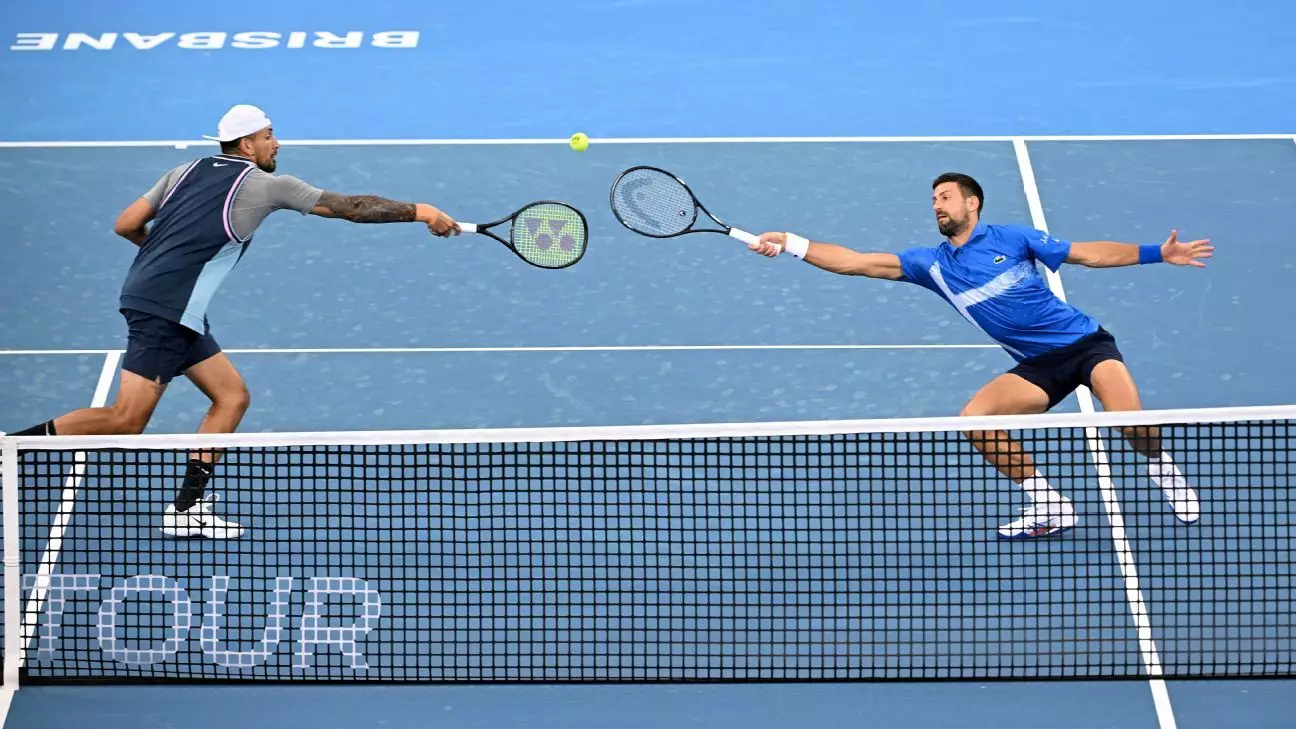In the world of tennis, few players evoke as much passion and controversy as Nick Kyrgios. The Australian star made headlines recently with his return to the game after enduring a long road to recovery from wrist surgery. His participation in the Brisbane International showcased both his competitive spirit and the physical toll that elite-level tennis demands. Despite the outcome of his matches, Kyrgios’s performance raised questions about the intricacies of returning from injury, the dynamics of partnering with a legend like Novak Djokovic, and the ever-evolving landscape of professional tennis.
The narrative surrounding Kyrgios’s return is layered, deeply intertwined with the athlete’s history of injuries and public persona. After being sidelined for two and a half years, many fans and critics were hopeful yet apprehensive regarding his performance. His previous encounter against Giovanni Mpetshi Perricard served as a reminder of the challenges faced by athletes as they return from significant injuries. In a grueling three-set match, Kyrgios battled not only his opponent but also the remnants of pain from his surgically repaired wrist. This match set the stage for his much-anticipated doubles appearance with Djokovic, a symbolic partnership for both players who have been through their share of ups and downs in the sport.
Kyrgios’s resilience was palpable as he took to the court alongside Djokovic. Serving at speeds that belied his recent struggles, he showcased a level of skill that hinted at his previous highs while still acknowledging the lingering discomfort from his surgery. The psychological aspect of returning to a sport after such a setback cannot be understated. Kyrgios openly discussed the awkwardness of his positioning, with “six holes in [his] hand and one in [his] arm,” emphasizing that his comeback was experimental and filled with uncertainty. His candid remarks revealed a layer of vulnerability that many athletes tend to gloss over.
Kyrgios and Djokovic’s doubles match, though not victorious, served as a reminder of the unpredictable nature of sports. The pair faced the formidable duo of Michael Venus and Nikola Mektic, top seeds in the tournament. Despite showing flashes of brilliance, it was Djokovic’s untimely double fault that shifted the match’s momentum at a crucial moment. This highlights an important aspect of doubles play: it’s not just about the skills of individual players, but also about how they can affect each other’s performance in high-pressure situations. This precarious balance can make or break a team, and unfortunately for Kyrgios and Djokovic, it played a role in their defeat.
While the scoreboard read against them, Kyrgios and Djokovic left the court with smiles, truly a testament to their camaraderie. Their reactions post-match reflected the spirit of the game; it is as much about the journey and the shared experiences on the court as it is about the results. Mektic’s praise for facing off against the celebrated pair in the first match of the year encapsulated the honor and excitement of competing against top talent, regardless of the outcome.
Looking ahead, Kyrgios’s path remains uncertain as he contemplates his performance and recovery. With an eye on the upcoming Australian Open, worrying thoughts about his wrist and overall health loom large. The tennis calendar does not wait for anyone; ranking points and invitations to high-profile tournaments hinge on consistent performance. Kyrgios’s expressed desire to rest in Canberra before tackling the Melbourne Park event underscores a critical reality for athletes: the importance of listening to their bodies amidst the pressure to perform.
Furthermore, as discussions of mental health in athletics become more prevalent, Kyrgios’s journey offers valuable insights. The pressures of expectation can overwhelm even the most talented players, and Kyrgios’s struggle is a reflection of the broader challenges faced by athletes today. His commentary on past errors and lack of proper care during his youth reveals a reinvigorated perspective: a blend of humility and hard lessons that could pave the way for a wiser, more strategic approach to his craft.
While Nick Kyrgios’s return to competitive tennis may have yielded mixed results, the significance of his journey is clear. It serves as a reminder of resilience, adaptability, and the complex interplay of physical and mental health in the world of sports. As he navigates his comeback, fans and analysts alike will be watching closely, hopeful that this chapter in his career will unfold into something extraordinary.


Leave a Reply